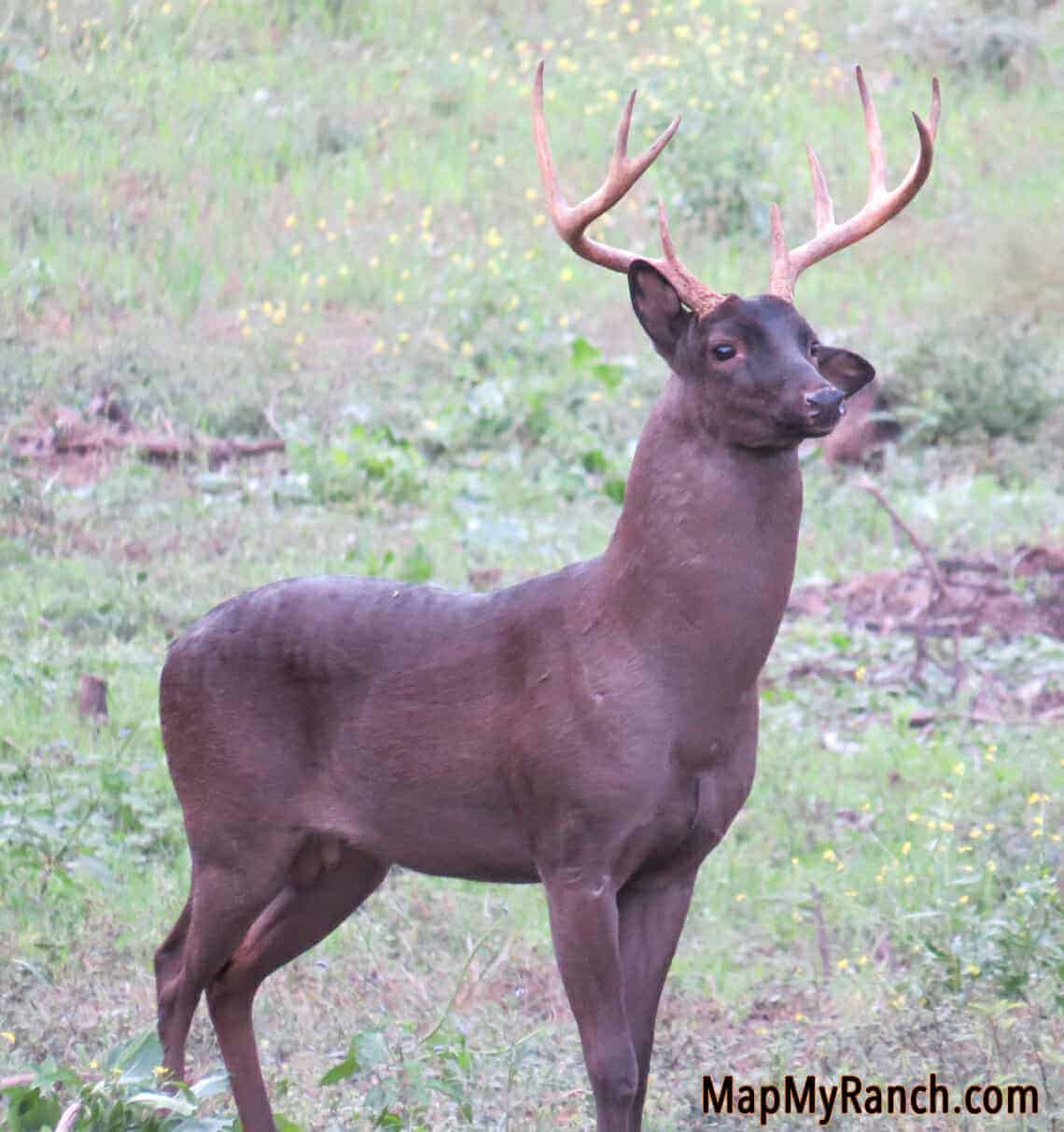Melanistic whitetails are the absolute rarest form of whitetail known; Although, a few hunters in parts of Texas have actually had the chance to harvest these animals. Truth be told, not very much is known about melanistic whitetails, while experts believe the genetic mutations that cause albinoism actually reduces the survival rate of the animal due to predators, the melanistic mutation is believed to have the opposite effect.
What is Melanism?
Melanism is the complete opposite of albinism. In albinism the pigment melanin is completely absent, in this circumstance, there is an excess of melanin. According to Biology-online.org, “Melanism is a condition in which a bodily part is morphologically dark due to the unusually high deposition of melanin. Specialized cells called melanocytes produce a dark pigment called melanin. This pigment attributes to the dark coloration of the hair, eyes, skin, plumage, pelage, and other bodily parts of a living organism”.
How Rare are Melanistic Whitetail Deer?
Oddly colored whitetail deer are always a sight to be seen, and many adore these mutations. While everyone has heard of albino whitetails, different reports claim that their rarity is between 1 in 20,000-100,000. The chances of a piebald whitetail being born are much higher. It is believed to be 1 in 1000.

That being said, the chances of a deer being born melanistic are considerably less than that of an albino. So small in fact I could not even find a general stat for their numbers. Melanistic deer are not harvested every year; however, in 2016 a young girl named Brooke Bateman harvested a wide melanistic whitetail off their 1,800-acre hunting lease in Stephens Texas, one of the few ever recorded. That year, Texas harvested 600,000 whitetails, while according to the QDMA The United States as a whole recorded over 6,000,000 whitetails harvested.
Considering that we do not get recorded harvests of melanistic whitetails every year, I would conclude that the chances of seeing one are much less than 1 in 6,000,000. Although, after talking with many hunters online, most of them that have seen a melanistic whitetail choose to pass up these magnificent creatures. So the chances would probably be more around the range of 1 in 500,000 or higher in my opinion.
What Causes Melanism?
Melanism is a random mutation that can occur in many types of animals. It is believed to be a mutation of the melanocortin 1 receptor gene (MC1R). Just like albinism, Melanism is a recessive gene, so the gene will likely not be passed down, but it is not impossible.

The Effects of Melanism Survival Rates
Mutations happen all the time in all organisms. They are a large part of natural selection and evolution. When animals have a mutation that is beneficial to their survival rate, and therefore their breeding rate, it tends to stick around. Being melanistic is not a giant game changer for whitetails from a survival standpoint, if it was, they would all be melanistic. It is possible that being melanistic could give whitetails a slight advantage but this would be negligible. Whitetails are already fairly well camouflaged for their environments so we do not see large populations of black whitetails across the United States.
Should You Shoot a Melanistic Whitetail Deer?
If you really like black whitetails and wish that we could have them everywhere, sadly that is impossible. A lot of hunters choose to pass up on the unique deer whether it be piebald, albino, or melanistic. Some do it out of hopes that the deer will reproduce and others pass them simply out of respect for how rare they are.
If a deer with this mutation reproduces, it does not make more black offspring. Instead, they will be brown like the other parent. Now since we do not fully understand melanism, and I do not think we have ever captured two melanistic whitetails, we do not know what would happen if we breed them. They could possibly create a melanistic offspring, meaning melanism is a recessive gene, or the offspring could come out brown. Either way, harvesting one of these animals will not make a difference in the abundance of this abnormality, because free-range genetics are close to impossible to control.
Melanistic Whitetail Deer Distribution

Melanistic whitetail deer are sighted across the United States. Some of the documented states include Mississippi, Michigan, Virginia, Pennsylvania, Texas, and South Carolina. The largest population seems to be in Texas. A 1999 study by Texas Tech University professors Dr. John T. Baccus and John C. Posey found that in a southwest region close to the Edwards Plateau Ecological Region, melanism had an incidence rate of 8.5%. The reasoning behind this concentration is still unknown. It is possible that the dark color helps them better camouflage themselves against predators, aiding natural selection.
Thank you for reading my article about melanistic whitetail deer. I hope you enjoyed it and learned something you didn’t already know. If you like my content, subscribe to my weekly update. If you have any other questions about melanistic whitetail deer or just want to connect, feel free to email me at Patrick.Long@omegaoutdoors.net.
